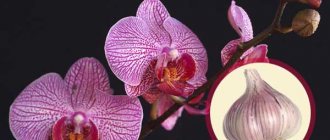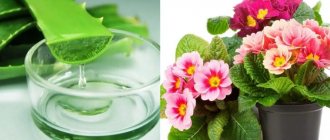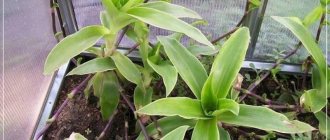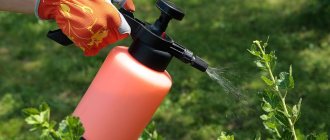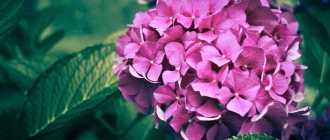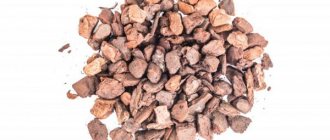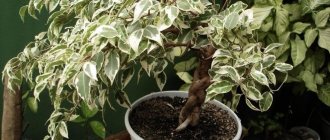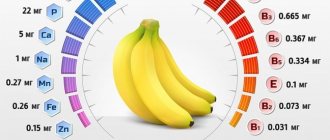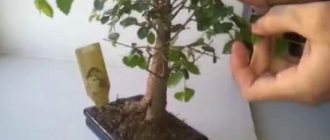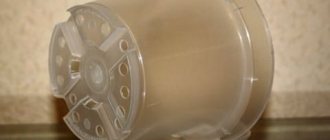Ferns are the oldest tree-like and groundcover plants on planet Earth, which have managed to preserve not only their appearance and structure, but also their diversity of species. They live in all corners of the Earth, except Antarctica, the desert. Withstands drought, humidity, high and low temperatures, and is resistant to environmental changes.
Despite the fact that in modern environments, ferns no longer predominate in the plant world and are not huge in size, they amaze with their originality and mysterious beauty. An interesting representative of them is the bracken fern.
What is bracken fern?
Bracken ferns (Pteridium aquilinum) are young, tender, tightly curled shoots of a herbaceous plant in the Dennstaedtiaceae family.
This is the most common edible fern found in Russia. There are many other species, but the only safe one is the bracken. Other varieties are similar in appearance but can be poisonous.
What does a bracken fern look like?
Appearance
Lichen is considered a very ancient shrub, more than 400 million years old. The bracken plant has been growing since the time of dinosaurs. An old legend says that if any lucky person finds a fern flower, he will be immensely rich and lucky. After all, a lichen blooms in an instant. The difference between bracken and other varieties of fern is that it grows solitarily. All other species grow from a nest. The collection takes place in May, when it is still very small. Before planting bracken on a plot, beginning gardeners should know what lichen looks like. After all, there are a whole lot of subspecies: ostrich, kostenets, centipede, etc.
The trunk is absolutely smooth, without scales. The root system is so powerful that it can withstand fires and later sprout again. Thanks to this feature, bracken has been growing in this place for hundreds of years. The root is creeping; buds are formed on it, from which individual shoots are formed. The stepsons are 10–20 cm apart from each other and at first have a snail-shaped head, which later blooms into wide leaves.
The triple-pinnate crown has a specific sweetish odor that attracts ants. The foliage is light green in color and is 70 cm high.
Instructions for salting bracken fern
For pickling, young, succulent shoots of bracken fern are used, collected from plants in an early stage of development with an unbranched top, with a diameter of at least 5 mm and a length of at least 15-30 cm. The root part is cut off by 5-6 cm.
It is advisable to carry out salting no later than 3-4 hours after collection. Use barrels or containers of suitable volume. They must be durable, clean, free of foreign odors, and not leak.
The process occurs in two stages.
First pickling
- Prepared shoots are collected in bunches with a diameter of 5-6 cm.
- A 3-5 cm layer of salt is poured onto the bottom of the prepared containers.
- Bunches of fern are placed on it and sprinkled with salt.
- Repeat the process.
- Salt 7-8 cm thick is poured onto the top layer of fern.
- Place a lattice or a circle with holes on which a pressure is placed equal to the weight of the planted shoots, that is, 100% of the weight of the fern.
The duration of the first salting is 2-3 weeks.
The amount of salt is 50% by weight of raw materials.
The weight of the oppression is 100% of the weight of the raw material.
After the end of the first salting period, the brine is drained. After it has drained, the oppression and circle are removed, and the fern is quickly transferred to another container for the second salting.
The drained brine cannot be used.
Second salting
The second fern salting is done with salt and its concentrated brine.
- A layer of salt is poured onto the bottom of the container or barrel, then a row of ferns is laid, sprinkled with salt and again a row of shoots.
- Thus, for the second salting, the fern is laid in the same order as for the first, but with the expectation that the upper bunches from the first salting are laid down and the lower ones are laid up.
- A 23% salt solution is poured into the container with the shoots, covered with a lattice or circle and pressed with a load of at least 30% of the weight of the fern that has undergone the first salting.
The duration of the second salting is 2-3 weeks.
The amount of salt is 30% by weight of raw materials.
Brine concentration – 23%.
The weight of the oppression is at least 30% of the weight of the raw materials.
After the second salting period has expired, the fern is removed, shaken off the salt, and placed in a large sieve or colander to drain the brine.
Then it is placed in clean glass jars. Fill them to the top; you cannot leave a large gap between the fern and the lid.
Care
Thai fern: description, care and cultivation
The yield of Orlyak, which the Far East achieves when growing young leaves, ranges from 100 to 950 kg per hectare, mature leaves - from 900 to 8,500 kg/ha. It depends on the density of its growth. Immediately after planting the fern on the prepared field, it is watered. Then care consists of watering 2 to 4 times during the growing season. The obligatory protective plant iris pykulka dies off, mulching the soil for the next year. This suppresses weed growth and retains moisture. When planting under trees, natural rainfall may be sufficient.
The experiment shows that during the primary growing season in the field (year 1), the number of shoots increases by 5 times, in year 2 – by 10. Consequently, this method of cultivation can be used to obtain raw materials. This crop loves loose soil with air access to the roots, as well as a sufficient amount of moisture.
Loose soil
Care involves the following:
- Frequent moistening of the soil without harmful stagnation of moisture.
- At the same time, mineral fertilizer is added twice per season.
- You can mulch with spruce needles.
- Old and broken branches are removed.
How to cook fresh and salted bracken
In its raw form, bracken is poisonous, so freshly harvested shoots are pre-soaked for at least 12 hours, periodically changing the water.
Soaked bracken shoots are boiled in boiling water for 10 minutes or until the bitter taste disappears almost completely.
Do not overcook the fern, as with further heat treatment it may lose its attractive appearance.
Salted bracken also needs to be soaked for 4-12 hours before cooking to reduce the salt. Then it is boiled for 10 minutes after boiling.
Possible harm
It is prohibited to eat bracken fern fresh. It must be soaked before cooking, and then boiled in salted liquid.
Also, you should not use overgrown stems, since an adult plant accumulates toxic substances in large quantities. Descriptions and photographs of the crop will tell you what danger the plant can pose to the body and health in general.
Bracken can bring both benefit and harm to a person. In this regard, if fern has not been included in the diet before, you should consult with your doctor before taking it for the first time .
He will advise how best to use the plant to get less harm and maximum benefit.
Chemical composition and calorie content
Nutritional value per 100 g of fresh fern (Pteridium aquilinum):
- Calories: 34 cal.
- Carbohydrates: 5.54 g
- Fat: 0.40 g
- Protein: 4.55 g
| Vitamins and minerals | Quantity | % of daily value |
| Niacin | 4.980 mg | 31 |
| Riboflavin | 0.210 mg | 16 |
| Thiamine | 0.020 mg | 1,5 |
| Vitamin A | 3617 ME | 120,5 |
| Vitamin C | 26.6 mg | 44 |
| Potassium | 370 mg | 8 |
| Sodium | 1 mg | <1 |
| Calcium | 32 mg | 3 |
| Copper | 0.320 mg | 35,5 |
| Iron | 1.31 mg | 16 |
| Magnesium | 34 mg | 8,5 |
| Manganese | 0.510 mg | 22 |
| Zinc | 0.83 mg | 7,5 |
| Selenium | 0.7 mcg | 1 |
| Beta carotene | 2040 mcg | — |
| Alpha carotene | 261 mcg | — |
Bracken fern is rich in nutrients but low in carbohydrates and fat, making it an excellent dietary product.
It contains:
- Vitamin A is essential for improving and maintaining vision, as well as protecting against the destruction of teeth, tissue, muscles and bones.
- Vitamin C – supports the functioning of the immune system and protects against infections, reduces arterial hypertension, promotes wound healing and protects the eyes from cataracts.
- Potassium – strengthens the cardiovascular system, and is also beneficial for muscle health, prevents cramps, and also improves bone health.
- Iron – increases the production of red blood cells and prevents anemia, increases energy, ensures proper oxygenation of all organs and helps regulate body temperature.
- Manganese – stimulates the production of enzymes necessary for bone growth, preventing loss of bone density. Prevents the development of osteoporosis, helps regulate metabolism and balance blood sugar levels.
- Copper – relieves pain from inflammatory conditions such as arthritis, is vital for healthy growth and development, and is responsible for eye and hair pigmentation.
- Niacin – lowers cholesterol, relieves arthritis and improves brain function.
- Riboflavin – essential for the skin, digestive tract, and important for eye health.
Use in cooking
Bracken fern (photo and description will explain in what form and how the plant is used for culinary purposes) in the form of rhizomes and shoots is often included in food:
- In Japan, Korea and China, rachis plants are mainly used. This is due to the fact that they contain a large amount of amino acids. At the same time, they are quite nutritious.
Bracken fern is used in oriental cuisine for pickling.
They can be cooked like olives or asparagus. Also, after soaking rachis in salty liquid, it is permissible to preserve, pickle, salt or fry. The taste of the prepared rachis is similar to mushrooms.
- In the Canary Islands, the dug up rhizomes are dried and then ground and added to flour when baking bread.
It is permissible not only to fry fern shoots, but also to extinguish them. Moreover, they can be included in side dishes, salads, and meat and fish delicacies. It is recommended to use as a filler when creating pancakes, pies or pies.
However, before direct consumption, you will need to remove all bitterness from the plant, as it can be poisonous. To do this, you need to immerse freshly collected raw materials in water and then boil in salted liquid for 3 minutes.
Soaking makes it possible to remove not only bitterness from the fern, but also toxic substances with excess salt.
The foliage is often torn off. Cooked shoots must curl into a ring. Afterwards you can taste them.
During the stewing process, the product changes its color to greenish-brown. The raw material harmonizes perfectly with peas, various cereals and potatoes. If it is necessary to add a component to a gravy or fatty sauce, the fern is initially dried and then crushed to a fine fraction.
While boiling the product, the desired texture of the shoots should be achieved. In this regard, it is recommended to undercook the product rather than overcook it. This is because overcooked fern feathers lose their crunch and flavor.
The welding process should not last more than 10 minutes. Then you will need to drain the liquid and rinse the raw materials under a stream of water. The product must be stored in the refrigerator compartment for several days.
In Japan, the plant is boiled only in a copper container, as this helps preserve the rich green hue of the fern.
Based on the description and photographs, the bracken fern is considered an edible and healthy plant because it contains a sufficient amount of nutrients. However, when consuming, it is necessary to remember that the culture has a number of contraindications.
Useful properties of bracken fern
Bracken fern provides many health benefits due to its rich nutritional content. Here are some of its useful properties:
- Increases immunity. Rich in antioxidants (vitamins A and C), fern helps protect the body from infections as well as damage caused by free radicals.
- Protects against cardiovascular diseases. Thanks to the presence of niacin and potassium, regular consumption of bracken fern protects the heart and lowers “bad” cholesterol (LDL). Thus, it helps reduce blood pressure and the likelihood of strokes and heart attacks.
- Increases the number of red blood cells. Bracken fern is rich in iron and copper, therefore it maintains the level of red blood cells in the blood, protecting against anemia and enriching the blood with oxygen.
- Supports eye health. Containing about 100% of the recommended daily value of vitamin A, bracken protects the eyes against age-related macular degeneration.
- Increases energy. This is largely due to the presence of manganese in the composition: it helps regulate the functioning of the thyroid gland and also maintains blood sugar balance.
Contraindications
Bracken fern (the photo and description will tell you who should stop eating the plant so as not to cause harm to the body) is often used in home treatment.
Bracken fern is contraindicated for hypotension
However, you need to be especially careful and not get carried away too much, since during the treatment process the harm and benefit from using fern will not be the same.
It is necessary to understand that Bracken is poisonous and with large amounts of it, toxic substances can accumulate in the human body, provoking the opposite result to what was expected.
There is a group of people who are prohibited from using fern in treatment, this category includes the following:
- pregnant women or nursing mothers;
- hypotensive patients, who have constantly low blood pressure;
- people with chronic diseases at the time of their exacerbation;
- Small children.
Despite the fact that the bracken fern contains a large amount of vitamins and other nutrients, the poison contained inside should not be discounted, since its overdose can cause the following pathologies:
- dizziness;
- slow heartbeat;
- shortness of breath and suppression of respiratory functions;
- rapid reduction in blood pressure, fainting;
- severe pain in the temples or the back of the head;
- nausea and vomiting.
If the overdose is very high, death may occur. To prevent this condition, you must carefully follow the dosage and all recommendations for the use of raw materials, which are described in the recipe and on the packaging.
Landscape
Bracken can be used in gardens, parks, as an ornamental plant. As a garden decoration, ferns are planted in the shade, under trees, on the north side of houses. It can be placed in open ground or in a flowerpot. In addition to the bracken, common ostrich, male shield and stump ferns are also acceptable in temperate climates. At the same time, the plants have different shades, which looks very beautiful.
If the sprouts are taken from the forest, you need to take some soil with you for planting on your own territory to put in the planting hole. In the first year, water abundantly, then the plant takes root successfully.
Attention! You need to be careful when the rhizome spreads; it is recommended to install limiters.
Lace fern leaves look good next to lilies and pond plants. In rock gardens, the combination is made with creeping crops, hosta, and shade-tolerant species. The hedges from Orlyak are also beautiful.
0 0 votes
Article rating
